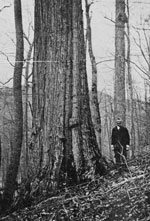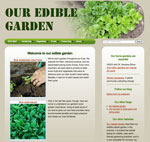Save the Rain
Downtown Walking Tour
Fri., Oct. 4
12:15 - 1:00 pm
| |
| |
Join Amy Samuels to learn about the rain gardens, bioswales, green streets, porous pavements that comprise our green infrastructure.
Meet in front of City Hall, 233 E. Washington Street
(Lightning date: Oct 9)
|
Invasive Species Workshop
Tues., Oct. 8
9 am - 4 pm
|
 | | Japanese knotweed |
|
Experts will address these topics: 1. Impacts of Invasive Species on American Hart's Tongue Fern 2. White-tailed Deer and Their Impacts to Forest Ecosystems and the Spread of Invasive Species. 3. The Kettle Lakes of Cortland and Onondaga Counties Anthropogenic Influences on Aquatic Invasions 4. Legislative Action for Addressing Impacts from Invasive Species in NYS 5. Shifting Ecologies of Vector- borne Diseases: Novel Emergence, Recent Resurgence, and the Usual Suspects. 6. Perspectives of Climate Change on Invasives Sponsored by the Sisters of St. Francis, held at Alverna Heights in Fayetteville. For more info and to register, download the brochure at http://alvernaheights.org/
|
Return of the King: Restoring the American Chestnut
Thurs., Oct. 10
|
 | | American chestnut |
|
The American chestnut tree was one of the most abundant and important trees in the eastern forests before it was devastated a century ago by chestnut blight. American chestnut trees with enhanced blight resistance have been developed using the tools of biotechnology. This free lecture by Dr. William Powell will discuss this step in returning this king of the forest. Free and open to the public.
Thurs., Oct. 10 7:30 pm Gateway Center,
SUNY ESF
Parking is available on campus. (Download temporary parking permit at www.esf.edu/rwls .) For more info, contact the Roosevelt Wild Life Station, 315-470-6762 or visit www.esf.edu/rwls
|
| Attention, Teachers! | |
|
Your students can participate in the Symbolic Migration of the monarchs, uniting children across North America. All information is available at Journey North |
Onondaga Lake Conservation Corps
Sat. Oct. 19,
9 am-noon
|  |
Join the team of volunteers planting native plants to help transform Nine Mile Creek. In addition to planting, you'll learn from experts from the Montezuma Audubon Center, Onondaga Audubon Society, and others. Help transform 30 acres to create a healthy Onondaga Lake watershed. Space is limited. Registration is first come, first served. RSVP to the Montezuma Audubon Center at montezuma@audubon.org with the subject line "Onondaga Lake" or call 315-365-3588 by Oct. 10.
|
Preserving Water Quality in a Changing Climate
Oct. 26
8 am - 2 pm
| |
| |
The Symposium will feature local experts discussing invasive species, water quality, sustainable landscapes, adapting agriculture to a changing climate and sustainable regional planning.
A Keynote address will be given by Meteorologist Dave Eichorn.
Registration is $25 and includes lunch. It will take place at The Lodge at WelchAllyn in Skaneateles Falls.
Sponsored by Cornell Cooperative Extension
Agenda, registration and directions can be found on the CCE website.
|
| Our Habitat Garden |  |
Visit Our Habitat Garden website for information on providing habitat, earth-friendly gardening practices, plants, and various creatures here in Central New York.
|
HGCNY Officers
| |
| President:
Janet Allen
Vice-President:
Carol Biesemeyer
Treasurer:
Randi Starmer
Secretary:
Soule Leiter
Membership:
Linda Rossiter
Program Chair:
Carol Biesemeyer
Newsletter Editor:
Janet Allen
Additional Planning Committee Members:
Beth Mitchell
Dave Mitchell
John Allen
|
| HGCNY on Facebook |
As as more of us participate on our Facebook page, this will become a useful resource for asking (and answering!) local HGCNYers' questions about habitat gardening. |
|
Join HGCNY!
|  |
Becoming an official member of HGCNY is easy: just join Wild Ones! Basic household membership is $37/year, but there are other options, too. (See membership application or website.)
Wild Ones
P.O. Box 1274
Appleton, Wisconsin 54912-1274
Make checks payable to Wild Ones.
Or telephone toll-free 877-394-9453.
|
|
Our Edible Garden
|  | Visit OurEdibleGarden.org to see an example of a Central New York edible garden, the perfect companion to your habitat garden.
|
|
Sept. 29 starts our new program year!
 | | Hibiscus seeds |
We're pleased to again be meeting at Liverpool Public Library for our 2013-2014 program year. As before, all our meetings will be the last Sunday of the month at 2:00 pm. Free and open to the public. Invite a friend! ( Directions) As fall approaches, our first program is timely. Jim Engel, owner of White Oak Nursery, will discuss Collecting seed of native plants for use in restoring natural and human impacted landscapes. Learn everything you need to know about collecting seed of perennials, shrubs and trees. Then learn how to use that seed to create, restore and enhance the biological diversity of natural plant communities. Most plants reproduce from seed. By collecting and dispersing native seed, you can play a key role in helping nature recolonize degraded landscapes. Save the dates for upcoming programsOct. 27: Joe McMullen will discuss identifying plants in winter when they don't have their leaves or flowers.Nov. 24 ( NOT Thanksgiving weekend this year!): Jessi Lyons, Cooperative Extension natural resource educator, will discuss the Emerald Ash Borer. (No meeting in December.)
Janet Allen
President, HGCNY
|
|
|
Not every butterfly migrates
 | |
A black swallowtail butterfly chrysalis ready for winter, waiting to emerge as a butterfly in spring
|
We know that nectar plants, such as New England asters and goldenrods, are essential to fuel the monarchs' long journey to Mexico.
But what do other butterflies do? If they're not migrating from CNY and returning in the spring, they must be somewhere over the winter. Where are they?
It depends on the butterfly species. Some overwinter as eggs (e.g. Karner Blue), some as caterpillars (e.g. White Admiral), some as chrysalises (e.g. Black Swallowtail), some as adult butterflies (e.g. Mourning Cloaks). And, no, butterflies do not need nor do they use those cute butterfly houses!
How can our landscapes support their survival over the winter? And what landscaping practices destroy them?
Carolyn Summers in her book Designing Gardens with Flora of the American East asks the question this way: Is your yard a source or a sink?
"If your garden produces a new generation of butterflies, it is a source. If a butterfly comes to your garden to reproduce and its eggs, caterpillars, or chrysalids are destroyed, your garden is a sink. The good news is that you can provide safe hibernation for butterflies at the same time you lighten your garden workload." (p. 31)
One prime way your yard becomes a sink is by raking up all your leaves and exporting them to the local landfill!
Summers suggests:
* Tolerate as much untidiness as possible.
* Keep your leaves and incorporate them into the mulch in your garden beds.
* In spring, gently rake some leaves away from spring ephemerals, and later when the weather warms, gently remove some of the leaves from other perennials, trying to not smother any potential butterflies in too-deep leaf piles.
A lawn is the only area that needs to be raked. Reduce your lawn area, and you'll reduce raking.
|
|
There's that myth again!!
 | | A bumblebee on goldenrod |
It was gratifying to see the front page piece addressing the myth about goldenrod in last Friday's (Sept. 20) Post-Standard (though being an e-version only edition means many people didn't see it).
Many people still believe it's the showy goldenrod causing their allergies rather than the real, though nondescript, culprit: ragweed!
As the piece said,
"Ragweed is wind-pollinated, which means it has pollen grains that are tiny enough to be blown by the wind from one plant to another -- and unfortunately, to people's noses ...
Goldenrod, on the other hand, is pollinated by insects. Its pollen grains are big, heavy and almost Velcro-like, designed to stick to visiting insects and be carried to other plants. The pollen grains fall to the ground rather than wafting in the air."
And from Don Leopold's book Native Plants of the Northeast on p. 129:
"While many have tried to repair goldenrod's reputation for decades, too many people still have not heard this message."
For more information about this issue, I've compiled some references on the Our Habitat Garden website at www.ourhabitatgarden.org/creatures/butterflies-food-fall.html.
|
|
Which birds are on the move this week?
 | | White-crowned sparrow is on the move |
The Cornell Lab of Ornithology's BirdCast provides regional bird migration forecasts in real time at
http://birdcast.info/.
This week's migration forecast shows a continental summary as well as specific information on each region. It shows the density of migration as well as the species that are currently migrating.
|
|
Native trees
 | | Oak leaves in fall |
An interesting factoid and an interesting quotation:
Factoid:
The native oak supports 534 species of caterpillars
The non-native gingko tree supports ONE species of caterpillar
~ Doug Tallamy
Quotation:
Most of the trees we plant will outlive us -- choose wisely; choose indigenous [i.e. native]. ... It's impossible to "deadhead" a tree; nonindigenous trees may produce seeds for a hundred years or more ... Indigenous species of trees in just ten genera (oaks, willow, and cherries are the top three) provide food for well over a thousand species of butterfly and moth caterpillars. Before choosing a new tree, consider how many life forms, in addition to humans, will be able to use it over the next hundred years.
~ Carolyn Summers, Designing Gardens with Flora of the American East, p. 49
|
|
|
Native Plant Shopping Guide
 | | Click image to download the Guide |
Are you looking for native plants in general or a particular native plant?
Chances are you can find them somewhere in CNY.
Our 2013 Native Plant Shopping Guide shows you where. You're welcome to download it by clicking on the image to the right, OR you can download it from our website homepage (midway down the page). It's free!
As always, we recommend that you call ahead if you're looking for a particular plant. Some less common native plants may be in short supply, and you wouldn't want to waste a trip to find that your plant had sold out. |
|
|